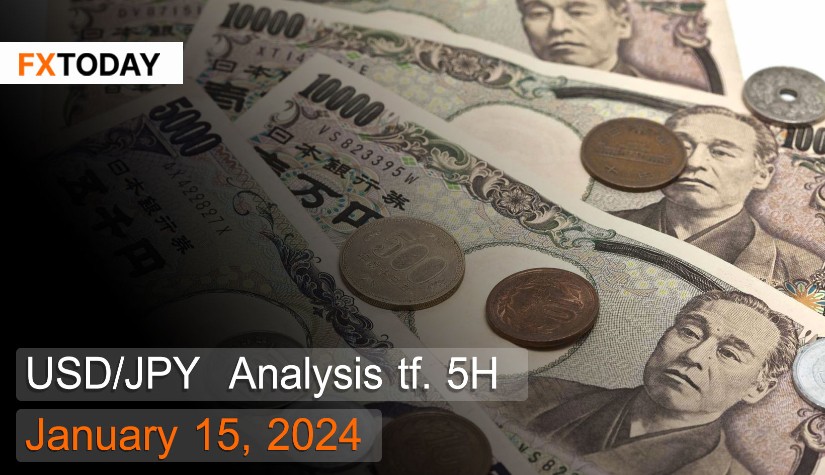Japan continues to face pressure from the issue of inflation.
The Japanese yen remains stable at around 145 yen per US dollar, as investors closely monitor Japan's inflation data to predict the future monetary policy trends of the Bank of Japan. The policymakers still prioritize maintaining a sustainable inflation rate, driven by an increase in wages. However, the current account surplus, lower than expected, continues to exert short-term pressure on the yen. Investors also believe that the Federal Reserve will soon start reducing interest rates, despite the US inflation rate rising to 3.4% annually, surpassing the anticipated 3.2%.
The core consumer price index in Tokyo increased by 2.1% year-on-year in December, slightly down from 2.3% in November. This index serves as an indicator of the nationwide inflation trend, which still exceeds the Bank of Japan's 2% target. The increasing pressure from inflation may lead the Bank of Japan to consider adjusting interest rates once again.
Japan's trade balance increased to 1.9256 trillion yen in November, up from 1.7722 trillion yen in the same month last year but below the market expectation of exceeding 2.3851 trillion yen. While the services sector's trade surplus slightly increased, reduced exports and diminished primary income (income generated from both domestic and foreign government investments) had a direct negative impact on the trade balance.
The leading economic indicators index in Japan, used to measure economic trends in the next 2-3 months, decreased to 107.7 in November, the lowest since October 2020. Japan's economy remains fragile due to contracting GDP in the third quarter, increased cost pressures from inflation rates, and a significant decline in factory activities in November.
Japan's foreign reserves increased to $1.295 trillion in December from $1.27 trillion in the previous month. The growth in foreign reserves was driven by Japan increasing its holdings of foreign currencies to $1.16 trillion and a slight increase in gold imports.
The average cash income in Japan increased by 0.2% year-on-year in November, indicating that wage growth is still slower than the significantly increased inflation rate of over 2.5% in November. This has led to a continuous decline in real wages for the 20th consecutive month. Additionally, rising household energy expenses further emphasize the ongoing challenge of sluggish wage growth.
Techical analysis data (5H)
Resistance: 145.25, 145.44, 145.63
Source: Investing.com
Buy/Long 1: If the price touches support in the price range of 144.69 - 144.88 but cannot break the support at 144.88, you may set a TP at approximately 145.44 and SL at around 144.50 or according to your acceptable risk.
Buy/Long 2: If the price breaks the resistance in the price range of 145.25 - 145.44, you may set a TP at approximately 145.63 and SL at around 144.69 or according to your acceptable risk.
Sell/Short 1: If the price touches resistance in the price range of 145.25 - 145.44 but cannot break the resistance at 145.25, you may set a TP at approximately 144.69 and SL at around 145.63 or according to your acceptable risk.
Sell/Short 2: If the price breaks the support in the price range of 144.69 - 144.88, you may set a TP at approximately 144.50 and SL at around 145.44 or according to your acceptable risk.
Pivot point January 15, 2024 00:14 PM. GMT+7
| Name | S3 | S2 | S1 | Pivot Points | R1 | R2 | R3 |
| Classic | 144.50 | 144.69 | 144.88 | 145.06 | 145.25 | 145.44 | 145.63 |
| Fibonacci | 144.69 | 144.83 | 144.92 | 145.06 | 145.20 | 145.29 | 145.44 |
| Camarilla | 144.97 | 145.01 | 145.04 | 145.06 | 145.11 | 145.14 | 145.18 |
| Woodie's | 144.50 | 144.69 | 144.88 | 145.06 | 145.25 | 145.44 | 145.63 |
| DeMark's | - | - | 144.97 | 145.10 | 145.34 | - | - |
















